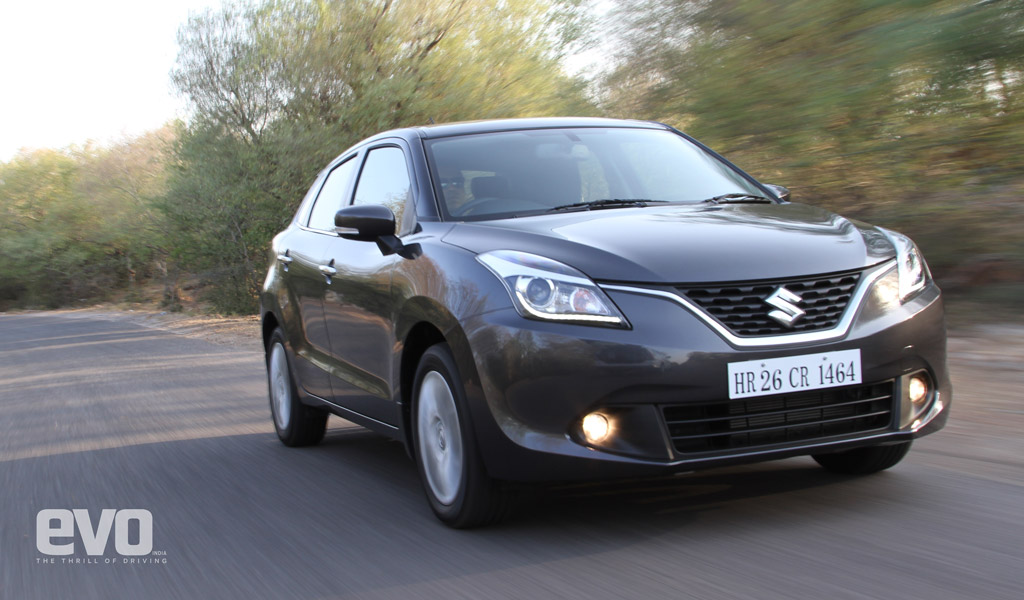Maruti Suzuki Baleno 1.2 Petrol Driven

With a kerb weight of 865kg for the base petrol variant the Baleno is 70kg lighter than an equivalent Swift, and that’s despite growing in length and width. Has this compromised safety? This is an important question because other hatchbacks, designed for India and tipping the scales at around the 800kg mark, have failed miserably in NCAP crash tests.
Maruti engineers assure us that this will not be the case with the Baleno. This car will be exported, from India, to 100 countries and there will be no difference in the body structure, and thus the crash performance. With this being a new platform that will underpin a whole new range of cars Suzuki has ensured that it will meet European crash safety norms, and while export cars will have ESP and six airbags, the structure will remain same as the Indian cars. And that gives us hope that the Baleno will perform well in a crash. Another good thing is that right from the base variant all cars will have dual front airbags and ABS as standard.

Add lightness
The big benefit of all the weight reduction is the same engines can be carried over, yet with improved performance. I know it is not so simple but reducing 100kg is akin to adding 10bhp and that is what the Baleno feels like over the Swift.
The motor remains the same 1.2-litre 4-cylinder K-Series unit developing an identical 84bhp as the Swift. However, thanks to the reduced weight, the motor feels peppier. As it is the Japanese are masters of naturally aspirated petrol engines and the Baleno does that reputation proud with the K-Series motor revving sweet and easy all the way to the redline. And it is mated to a beautifully slick 5-speed manual gearbox.
For the first time Maruti is also offering the option of a CVT transmission on the Baleno (not the cheaper and less refined AMT as on the Celerio, nor the power sapping 4-speed auto from the Ciaz). And even with the CVT the Baleno moves quite smartly, picking up speed with enthusiasm and kicking down without much hesitation. That said the rubber-band effect is very pronounced and when you want to get along in a hurry the motor whines quite audibly as the revs hold at the redline. It works best when driven in an unhurried manner where the refined nature of the engine and the easy-going manners of the gearbox make the Baleno an ideal city commuter.

Light on its feet
Much like the Swift the Baleno is a fun to drive car. You can feel that it is a light car (especially since the doors close with a tinny, non-Germanic, thud) but that doesn’t mean it gets worried by cross winds or undulating roads. In fact the Baleno is the first Maruti hatchback to ride well, with sophisticated road manners. Sharp bumps do catch her out but it is no worse than its competition on this front.
The upside is handling that is eager and willing. The steering (uses a new brushless motor) is not as direct and darty as the Swift’s but it is still quicker and more eager than the helms of its competitors. Shod with 16-inch rubber there is good cornering grip (thankfully the rubber isn’t as aggressively focused on fuel efficiency as that on the S-Cross), nice body control, good steering feedback and a nice seat-of-the-pants feel. Of course I wish it had more performance but within the limits of a naturally aspirated 1.2-litre engine the Baleno is up there with the best in this segment.
Braking his handled by disc brakes up front and drums at the rear but even on a small hill climb we didn’t find any brake fade. And the brakes have a nice progressive feel and good bite.

Light = efficient
And finally the weight reduction means fuel efficiency is a best-in-class 21.4 kmpl. What’s not to like?


